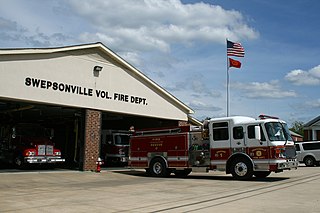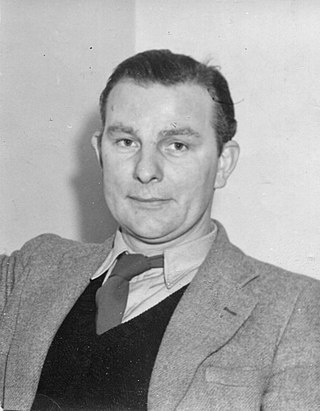Related Research Articles

A volunteer fire department (VFD) is a fire department of volunteers who perform fire suppression and other related emergency services for a local jurisdiction. Volunteer and retained (on-call) firefighters are expected to be on call to respond to emergency calls for long periods of time, and are summoned to the fire station when their services are needed. They are also expected to attend other non-emergency duties as well.

The Fire Brigades Union (FBU) is a trade union in the United Kingdom for wholetime firefighters, retained firefighters and emergency control room staff.

James Braidwood (1800–1861) was a Scottish firefighter who was the first Master of Engines in the world's first municipal fire service in Edinburgh in 1824. He was also the first director of the London Fire Engine Establishment and is credited with the development of the modern municipal fire service.

The London Fire Brigade (LFB) is the fire and rescue service for London, the capital of the United Kingdom. It was formed by the Metropolitan Fire Brigade Act 1865, under the leadership of superintendent Eyre Massey Shaw. It has 5,992 staff, including 5,096 operational firefighters and officers based at 102 fire stations.

The Auxiliary Fire Service (AFS) was first formed in 1938 in Great Britain as part of the Civil Defence Service. Its role was to supplement the work of brigades at local level. The Auxiliary Fire Service and the local brigades were superseded in August 1941 by the National Fire Service. After the war the AFS was reformed alongside the Civil Defence Corps, forming part of the UK's planned emergency response to a nuclear attack. It was disbanded in the UK in 1968.

Frederick John Horner was a British firefighter, trade unionist and politician, best known for creating the modern Fire Brigades Union.

Kent Fire and Rescue Service is the statutory fire and rescue service for the administrative county of Kent and the unitary authority area of Medway, covering a geographical area south-east of London, to the coast and including major shipping routes via the Thames and Medway rivers. The total coastline covered is 225 km ; it has 57 fire stations, and four district fire safety offices. The FRS provides emergency cover to a population of 1.88 million.

The National Fire Service (NFS) was the single fire service created in Great Britain in 1941 during the Second World War; a separate National Fire Service was created in 1942.

The National Firefighters Memorial is a memorial composed of three bronze statues depicting firefighters in action at the height of the Blitz. It is located on the Jubilee Walkway to the south of St Paul's Cathedral in the City of London, and it is approachable from the south bank of the River Thames via the Millennium Footbridge.

Firefighting has historically been a predominantly male profession throughout the world. However, since the 1970s, women have made inroads in both professional and volunteer fire departments in multiple countries. In modern times, women have served in a variety of fire service roles including as fire chiefs. Nonetheless, they comprise less than 20% of firefighters even in the countries where they are best represented.

The Bells Go Down is a 1943 British black-and-white wartime film made by Ealing Studios. The reference in the title is to the alarm bells in the fire station that "go down" when a call to respond is made. The film is an ensemble piece that covers the period between 27 August 1939 and 9 September 1940, when World War II began and London was subjected to aerial bombing, and is a tribute to the solidarity of not just those engaged in service, but among the British people as a whole.

Harry Errington GC was the only London firefighter to be awarded the George Cross during the Second World War.

Beckenham Crematorium and Cemetery is a cemetery in the London Borough of Bromley, opened in 1876.
The Belfast Fire Brigade came into existence in 1800, and until 1861 was managed jointly with the local police service. It then provided a dedicated firefighting service to the people of the city of Belfast until its amalgamation with the Northern Ireland Fire Authority on 1 October 1973, when it became the Fire Authority for Northern Ireland, today the Northern Ireland Fire and Rescue Service.

George Arthur Roberts was a Trinidadian soldier, firefighter, and community leader in Great Britain.

Sir Frederick William Delve,, was an English firefighter who became chief fire officer of the London Fire Brigade from 1948 to 1962, and was instrumental in the fire service's adoption of modern telecommunications technologies.

The Low Moor Explosion was a fire and a series of explosions at a munitions factory in Low Moor, Bradford, West Riding of Yorkshire in August 1916. The factory was manufacturing picric acid to be used as an explosive for the First World War effort and was well alight when the Bradford Fire Brigade arrived. A massive explosion and a series of smaller ones killed 40 people including on-site workers, a railwayman and six firemen who had attended the fire from the Odsal and Nelson Street fire stations.

Gillian Kluane Muirhead Tanner was a British firefighter. Tanner was the only female firefighter to be awarded the George Medal during the Second World War.

The Croydon Fire Brigade was the fire and rescue service for the County Borough of Croydon. Established in 1867, it was absorbed into the London Fire Brigade in 1965.
References
- ↑ "Old Palace School, Auxiliary fire service sub station, London, 19th April 1941". Fire Brigades Union. Retrieved 10 June 2022.
- ↑ "Air Raiders' Severe Attack". East London Advertiser. 26 April 1941. p. 1.
Firemen killed when sub-station was hit
- ↑ "Ten Die In Bombed A.F.S. Post". The Daily Mirror. 21 April 1941.
A school used as an A.F.S. station was split in half by a heavy bomb. Already six firemen, two telephonists and two young messenger boys have been extricated - dead.
- ↑ "In Loving Memory - Old Palace School Bombing". Old Palace School Bombing. 28 July 2021. Retrieved 10 June 2022.